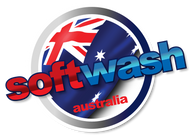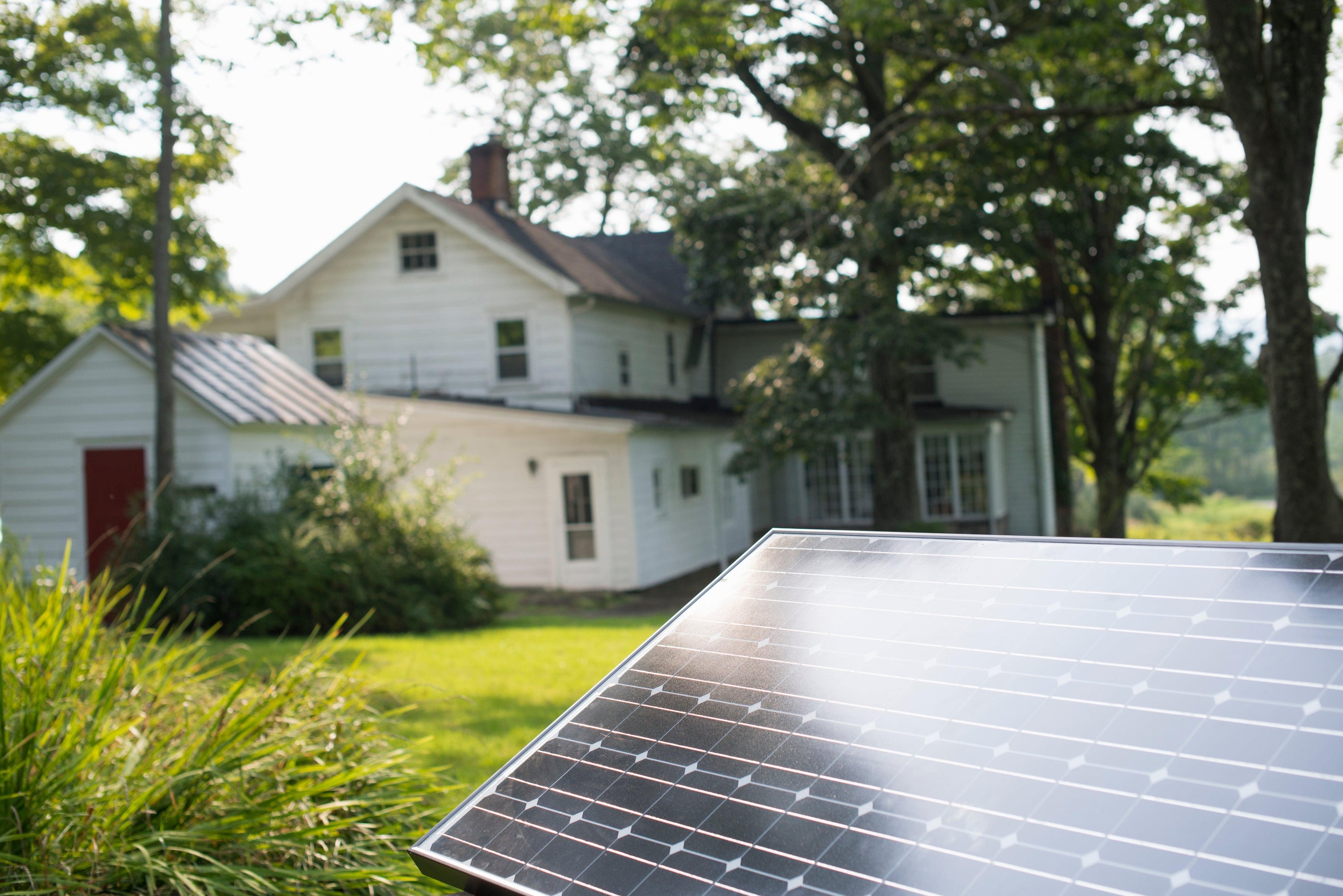With a rise in solar energy across the world, knowing how to keep your solar panels clean has never been more important. Maintaining your panels properly allows them to absorb sunlight and convert it into electricity at their maximum potential, meaning greater savings on your rates! Allow us to explain.
Why Cleaning Solar Panels is Important
Sunlight is the fuel for solar panels, and anything that blocks that light directly reduces their ability to generate electricity. Dirt, dust, and debris act like tiny shades, preventing sunlight from reaching what are known as “photovoltaic cells” beneath the panel's surface. This equates to a decrease in efficiency, meaning you get less power output for the sunshine your panels receive.
Studies show that even a light layer of dust can cause a drop in efficiency, and in extreme cases with heavy buildup or long periods without rain, energy production can fall by over 20%. Did you also know that dirty panels can degrade faster over time, due to environmental pollutants trapped on the surface?
So, while regularly cleaning your solar panels might seem like a hard task, it's important to weigh the cost of a professional cleaning against the potential loss of energy production and overall financial savings.
The Risks of Pressure Washing Solar Panels
Traditionally, a high-pressure approach might seem like a quick fix. But in the context of panel cleaning, it can be surprisingly damaging. Here's why you should avoid it:
Cracks and Scratches: The delicate surface of solar panels is susceptible to scratches and cracks under the forceful spray of a pressure washer. These cracks compromise the integrity of the panel, leading to electrical issues and reduced power output.
Reduced Efficiency: Even minor scratches or a dulled anti-reflective coating from high pressure can affect how efficiently sunlight reaches those photovoltaic cells we spoke of earlier. This translates to a drop in overall energy production from your solar panels.
Voided Warranties: Most solar panel manufacturers specifically warn against using pressure washers for cleaning. Using one could be considered misuse and void your warranty, leaving you responsible for any repairs or replacements needed.
Suitable Pressure Settings (If Pressure Washing is Attempted)
Here's what to keep in mind regarding pressure settings:
Extremely Low Pressure: Pressure should be significantly lower than what you'd use for cleaning decks or patios. Aim for a maximum of 1000 PSI (pounds per square inch) at the nozzle.
Wide Spray Pattern: A narrow, concentrated spray can be particularly damaging. Use a wide fan nozzle to distribute the water pressure more evenly and reduce the risk of concentrated force on any one area.
Important Note: Even with these precautions, pressure washing is still a risky option. Consider these alternatives for safer and potentially more effective cleaning:
Alternatives to Pressure Washing
Safer alternative cleaning methods include:
Garden Hose with Gentle Spray: A simple garden hose with a low-pressure setting and soapy water can be very effective for most cleaning needs.
Soft Brush and Water Rinse: For stubborn dirt or debris, use a soft-bristled brush with soapy water and a gentle rinse to remove them.
Professional Cleaning Service: Trained professionals have the expertise and equipment to clean your panels safely and effectively.
Step-by-Step Guide to Cleaning Solar Panels Safely
We’ve provided a step-by-step guide on how you can safely and effectively clean your solar panels. If you're unsure about doing it yourself, consider consulting a professional cleaning service. If you run a business, make sure you are taking the following into consideration on your worksites.
Before You Begin:
Safety First: Solar panels can be slippery when wet. Check the weather forecast and choose a cool, cloudy day to avoid working in direct sunlight and excessive heat. Wear closed-toe shoes with good grip and consider using a safety harness if you need to access your roof.
System Shutdown (Optional): While not always necessary, some homeowners prefer to turn off the DC disconnect switch to their solar inverter as an added safety precaution. Check your system manual for instructions.
Gather Your Supplies: You'll need a garden hose with a spray nozzle (adjustable pattern is ideal), a bucket filled with lukewarm water and mild dish soap, a soft-bristled brush (long-handled for better reach is helpful), a sponge (optional), and a clean, lint-free cloth for drying.
Cleaning Process:
Pre-Rinse: Start by giving the panels a thorough rinse with the hose on a gentle spray setting. This removes loose dirt and debris that a brush might scratch into the surface.
Soap and Scrub (Optional): For stubborn dirt or grime, create a mild soapy solution in your bucket. Dip your brush, sponge, or cloth and gently scrub the panel surface. Avoid using harsh chemicals or abrasive cleaners that can damage the coating.
Rinse Again: Thoroughly rinse the entire panel surface with clean water to remove all soap residue. Let the panels air dry or gently wipe them with your clean cloth.
Post-Cleaning Inspection:
Visual Check: Once dry, do a visual inspection of the panels for any cracks, scratches, or discoloration that might require further attention.
Performance Check (Optional): If you have a system monitoring app or device, you can check your solar power output before and after cleaning to see if there's a noticeable improvement.
Additionally, cleaning during cooler hours to avoid accelerated drying and subsequent water spots should be considered. Cleaning the panels in sections when you do so and maintaining them regularly (1-2 times a year approx.) are all ways to ensure you are cleaning correctly, efficiently, and safely.
Tools and Materials Needed
Cleaning Supplies:
Garden hose with adjustable spray nozzle: A gentle spray pattern is ideal for rinsing without damaging the panels.
Bucket: To hold your cleaning solution.
Soft-bristled brush (long-handled optional): Choose a brush with non-abrasive bristles designed for solar panel cleaning. A long handle can help reach higher panels. Our Solar Rocker brushes and pole system is perfect for this!
Soft sponges (optional): Microfiber sponges are a good option for cleaning the surface.
Eco-friendly dish soap: A mild, phosphate-free dish soap is gentle and effective for removing dirt and grime. EBC Glide is a glass and solar panel cleaning solution we stock, as well as SWAM as an easy moss, mold and lichen removal treatment.
Clean, lint-free cloths: These are perfect for drying the panels without leaving streaks.
Ladder (optional): A sturdy and secure ladder is necessary if your panels are not easily reachable from the ground.
Additional Considerations:
Deionized water (optional): Using deionized water for the final rinse can help prevent water spots.
What to Avoid:
Harsh chemicals or abrasive cleaners: These can damage the delicate anti-reflective coating on your panels.
Pressure washer: In some cases, the high-water pressure can cause cracks and scratches.
Standard household sponges or cloths: These may contain abrasive materials that can scratch the surface. It’s important to use tools such as brushes and sponges which have been specifically designed for an external cleaning function, as previously mentioned.
Maintaining clean solar panels means you are prioritising your finances, as well as the environment. By following these steps and avoiding harsh cleaning methods, you can ensure your solar panels operate at peak efficiency, maximizing your energy production and savings. Remember, if you're unsure about cleaning your panels yourself, don't hesitate to consult a professional. With a little care, your solar panels will continue to generate clean energy for your home for years to come.





